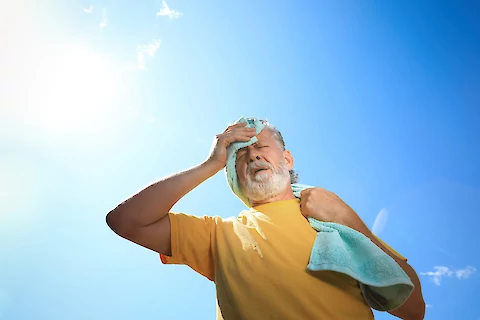
As the temperatures rise during the summer, so does the risk of heatstroke. As a caregiver, it's crucial to know the early symptoms of heatstroke to ensure the safety and well-being of your senior loved ones. This guide explores the early signs of heatstroke and discusses factors that may increase the risk for seniors, highlighting the essential role caregivers play in prevention and intervention.
Overview of Heatstroke
Heat stroke is a severe medical condition that occurs when the body's temperature rises rapidly, typically to 104°F (40°C) or higher, due to prolonged exposure to high temperatures or physical exertion. Seniors are at an increased risk for heatstroke due to factors such as age, certain medications, and medical history.
Early Symptoms of Heatstroke
Knowing the early signs of heatstroke may save a life. As a caregiver, it's essential to recognize these early symptoms to ensure the safety of your loved ones:
- High body temperature
- Altered mental state or behavior
- Nausea and vomiting
- Flushed skin
- Rapid breathing
- Racing heart rate
- Headache
- Excessive sweating or lack of sweating
- Unusual symptoms based on senior's medical history
Medications That May Change or Exacerbate Symptoms
Certain medications may increase the risk of heatstroke or worsen existing symptoms. These may include diuretics, antidepressants, antihistamines, beta-blockers, and calcium channel blockers. Discussing these risks with your loved one's healthcare provider and monitoring for any unusual symptoms concerning their medications is essential.
Prevention Strategies
Heat stroke may develop rapidly, sometimes in as little as 30 minutes. Make sure seniors stay cool and hydrated during the hot summer months. Early detection and intervention help prevent severe health complications or even death.
There are several ways that you can help prevent heatstroke in seniors:
- Encourage them to stay hydrated by regularly drinking water or sports drinks with electrolytes.
- Ensure they wear appropriate, light-colored, and loose-fitting clothing.
- Limit their exposure to direct sunlight during peak hours (usually between 10 a.m. and 4 p.m.).
- Make use of air conditioning or fans to help keep indoor spaces cool.
- Recommend taking cool showers or baths to help lower body temperature.
- Monitor weather conditions and plan activities accordingly to avoid extreme heat.
What to Do If Heatstroke Is Suspected
If you suspect your loved one is experiencing heat stroke, take these steps immediately:
- Call 911 for emergency medical assistance.
- Move them to a cooler environment, such as an air-conditioned room or a shaded area outdoors.
- Remove any excess clothing.
- Apply cool water or ice packs to their body, especially on the neck, armpits, and groin areas.
- Encourage them to take small sips of cool water or sports drinks if they're conscious and able to do so.
We Want to Help
With the right prevention strategies and quick intervention, you will help minimize the risk of heatstroke for the seniors you care for. For those living in San Marcos, Seguin, and Elgin, contact us at Senior Helpers San Marcos for professional caregiving support. We offer many resources, such as Personal Care and Wellness Watch, to help ensure the safety and well-being of your loved ones.